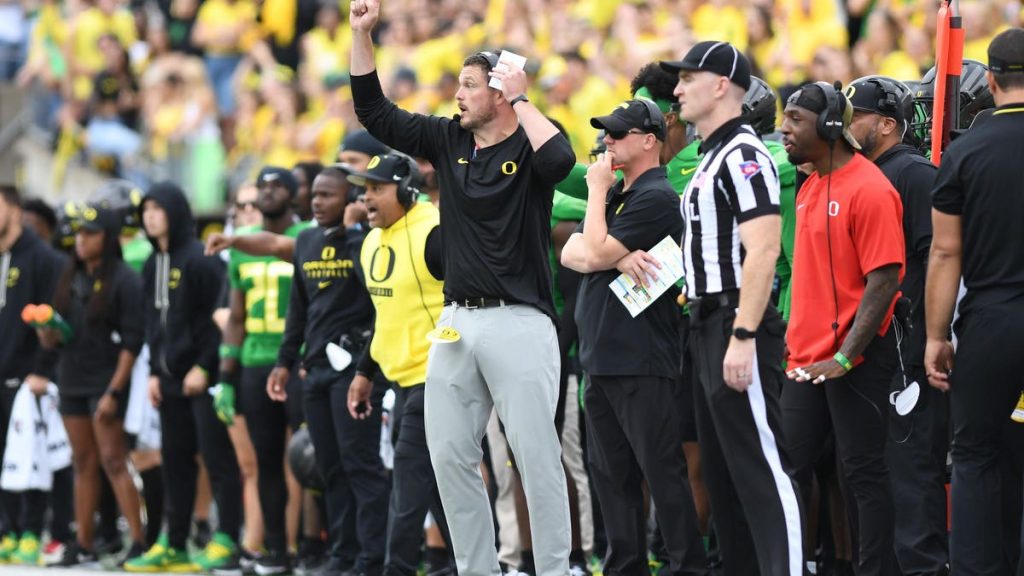On a typical Saturday during college football season, ESPN posts clips that often go viral, usually involving a spectacular throw, catch, or unlikely come-from-behind win.
This weekend, however, an ESPN clip didn’t have any highlights from the field because it was recorded before the game began. But it did have the drama people love—a rousing speech.
Granted behind-the-scenes access to the locker room, ESPN caught Oregon Ducks coach Dan Lanning giving his team a pep talk ahead of the game against Deion Sanders’ Colorado Buffaloes.
The 30-second clip was shared on social media, and quickly went viral after the Ducks won the game 42-6.
Three classic rhetorical techniques made it a good speech.
1. Repetition
“Rooted in substance. Not flash,” Lanning began. It was a clear reference to the glowing headlines Hall of Famer Deion Sanders has received for going 3-0 to start the season.
To underscore his point, Lanning repeated the phrases:
“Rooted in substance. Rooted in substance.”
“There’s a difference. There’s a difference.”
“Connection. Connection.”
“Does that mean something to you? Does that mean something to you?”
If Lanning wants to make the most of his short time with the players, why repeat nearly every phase? Because repetition— at carefully chosen times— is a classic rhetorical technique to motivate an audience.
Repetition didn’t start in the Ducks locker room. It’s an ancient rhetorical device used to reinforce the importance of a message. More than 2,000 years ago, Aristotle noted that the repetition of words adds to the urgency and drama of spoken speech.
The same device isn’t as effective in written text because the combination of repeating phrases while raising your voice makes the speech more powerful.
2. Parallelism
The line that’s making headlines from Lanning’s speech is “They’re fighting for clicks. We’re fighting for wins.”
This phrase is an example of parallelism, another effective speechmaking device. A speaker uses parallel language when they recite two or more phrases that are similar in structure.
In Lanning’s speech, both parts of the phrase have an equal number of words for rhythm and balance. In addition, by changing “they” to “we” and “clicks” to “wins,” Lanning emphasizes the contrast between the two teams.
3. Vivid imagery
Near the end of the speech, Lanning uses repetition and parallel language again, and adds vivid imagery for emphasis.
Lanning says,
“This game isn’t going to be played in Hollywood. It’s gonna be played on grass.” It’s going to be played on the grass.”
This imagery allows Lanning to paint a mental picture—a sensory experience—for his players. He carefully chooses words like “Hollywood” and “grass” to add more contrast between the teams.
It’s no surprise that when Lanning ends the pep talk with “Let’s Go,” the players cheer, raise their fists, and jump to their feet.
After the game, opposing coach Sanders acknowledged that Oregon’s coaches “did a good job preparing their team.” Sanders has plenty of motivational skills he’ll certainly use to re-instill confidence among his players. But for now, Lanning’s fiery pre-game speech is grabbing the spotlight.
Read the full article here










